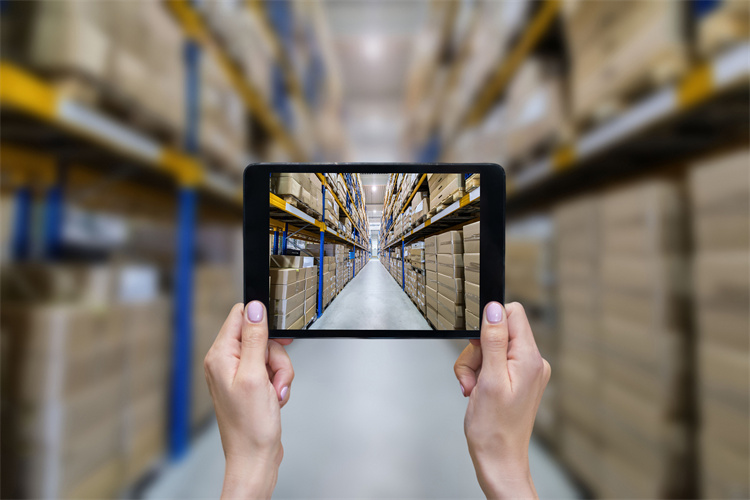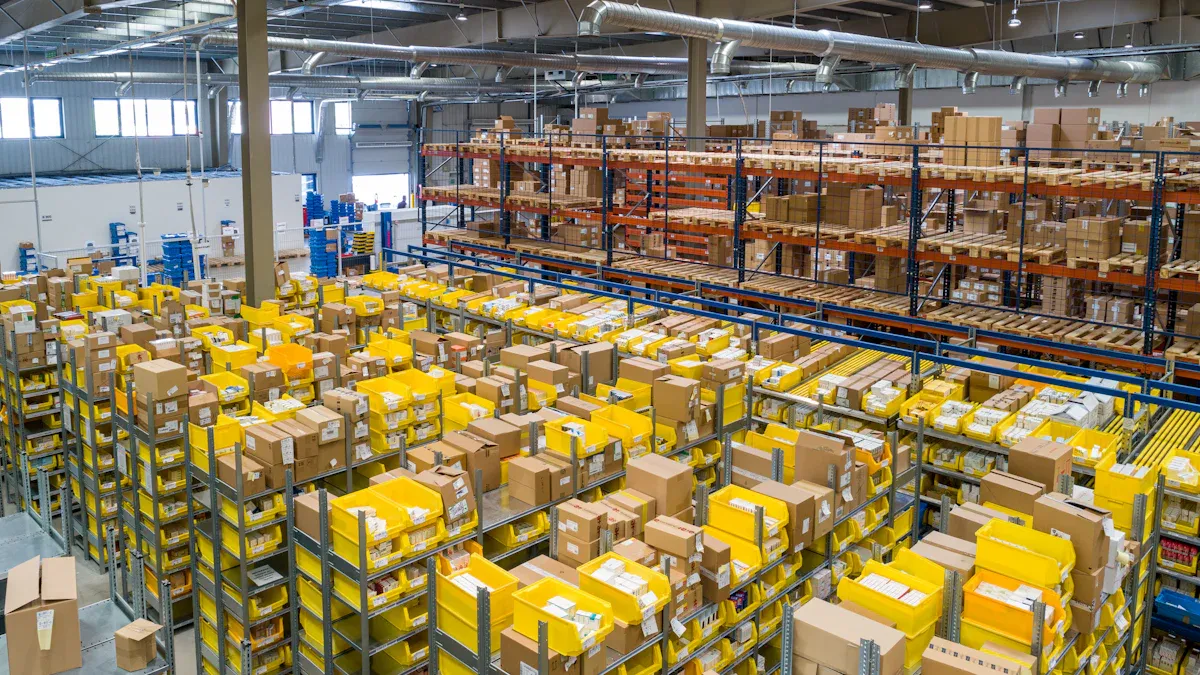What Is an Inventory Control Tower and How Does It Work

An Inventory Control Tower functions as a centralized, cloud-based platform that delivers real-time visibility and control over inventory. It is instrumental in optimizing supply chain management by tackling key challenges such as inconsistent data, decision-making delays, and scalability limitations. Industries like supply chain and transportation are increasingly leveraging these systems to boost operational efficiency through advanced technologies such as IoT sensors and GPS tracking. By incorporating predictive analytics and actionable insights, an Inventory Control Tower enables businesses to manage the complexities of modern logistics with unparalleled precision.
Understanding the Inventory Control Tower

What Is an Inventory Control Tower?
An inventory control tower is a centralized, cloud-based platform designed to integrate data from various sources and provide real-time visibility into inventory operations. It plays a vital role in supply chain management by enabling businesses to monitor logistics, fulfillment, and delivery processes. This system facilitates collaboration among internal teams and external partners, ensuring seamless communication and coordination. By leveraging advanced analytics, it identifies potential risks and enhances decision-making, ultimately improving business outcomes.
Key Features of an Inventory Control Tower
Real-time inventory tracking and visibility
Real-time tracking allows businesses to monitor inventory levels across multiple locations. This feature ensures accurate stock information, helping companies avoid overstocking or stockouts. It also provides insights into in-transit goods, enabling better planning and execution.
Integration with supply chain systems
An inventory control tower integrates seamlessly with existing supply chain systems, such as ERP and WMS platforms. This integration ensures a unified flow of data, reducing errors and improving operational efficiency.
AI-driven analytics and forecasting
AI-powered analytics enable precise demand forecasting and inventory optimization. By analyzing historical data and market trends, the system predicts future needs, ensuring timely replenishment and reducing logistical costs.
How It Differs from Traditional Inventory Management Systems
Traditional inventory management systems often struggle with tracking inventory levels effectively. These limitations can lead to increased costs, stock shortages, and insufficient demand forecasting. In contrast, an inventory control tower provides real-time monitoring, enhancing forecasting accuracy and optimizing inventory management. This advanced system reduces risks, improves efficiency, and ensures businesses maintain a competitive edge in the market.
How a Supply Chain Control Tower Works
Core Technological Components
AI and machine learning
AI and machine learning form the backbone of a control tower. These technologies analyze vast amounts of data to provide actionable insights. AI-powered control towers improve forecast accuracy, often reaching up to 90%, compared to traditional methods. Machine learning algorithms assess factors like weather patterns and political events to predict risks. This early warning system enables companies to take preventive measures, reducing disruptions in supply chain operations. AI also optimizes inventory levels, cutting excess stock by as much as 25%.
Cloud-based platforms
Cloud-based platforms ensure seamless data integration and accessibility. They enable real-time monitoring of supply chain operations across multiple locations. These platforms support continuous intelligence by capturing data in real time and providing end-to-end visibility. Their scalability allows businesses to adapt to changing demands without compromising efficiency. By centralizing data, cloud platforms enhance collaboration among stakeholders, ensuring smooth communication and decision-making.
IoT and sensor technology
IoT and sensor technology enhance monitoring capabilities by providing real-time updates on inventory and shipments. Sensors track the location and condition of goods, ensuring transparency throughout the supply chain. This technology supports data collection and analytics, offering faster and more accurate reports. IoT devices also enable scenario modeling, allowing businesses to simulate different outcomes and plan accordingly.
Step-by-Step Process
Data collection and integration
The first step involves gathering data from various sources, such as ERP systems, IoT devices, and external partners. A robust data strategy ensures the accuracy and timeliness of this information. Integrating these data points provides a unified view of supply chain operations, enabling better monitoring and planning.
Analysis and forecasting
Once data is collected, advanced analytics tools process it to identify trends and patterns. Predictive analytics plays a crucial role in planning and forecasting, helping businesses anticipate demand and adjust inventory levels. This step transitions from historical reporting to forward-looking indicators, improving decision-making.
Decision-making and execution
The final step involves using insights to make informed decisions. Control towers facilitate collaborative responses by connecting stakeholders. Automated systems execute these decisions, ensuring timely actions and minimizing delays. Regular reviews and feedback loops help refine processes and maintain efficiency.
Real-World Applications
Global inventory visibility with JusLink
JusLink, JUSDA's intelligent supply chain platform, provides unparalleled global inventory visibility. It integrates data across inventory silos, offering real-time insights. This capability enhances decision-making and enables rapid responses to disruptions.
AI-driven sales forecasting and replenishment
JusLink leverages AI to improve sales forecasting accuracy and optimize replenishment. Its predictive analytics tools analyze market trends, ensuring businesses maintain optimal inventory levels. This reduces the risk of overstocking or stockouts, enhancing supply chain efficiency.
Precision in-transit visibility and procurement coordination
JusLink excels in providing precision in-transit visibility. It tracks shipments in real time, ensuring timely procurement coordination. This feature supports optimal inventory control, reducing costs and improving service levels.
Types of Control Towers in Supply Chain Management
Operational Control Towers
Operational control towers focus on real-time execution and monitoring of supply chain activities. They provide businesses with the tools to manage day-to-day operations effectively. These control towers excel in offering:
Real-time visibility: They integrate data from multiple sources to track goods and inventory status, ensuring end-to-end transparency.
Data collection and analytics: By analyzing large datasets, they generate detailed reports quickly, helping businesses identify risks and improve performance.
Increased collaboration: Operational control towers connect internal teams and external partners, fostering better communication and faster issue resolution.
These features make operational control towers essential for businesses aiming to streamline their logistics and inventory management processes.
Strategic Control Towers
Strategic control towers take a broader approach by focusing on long-term planning and optimization. Unlike operational control towers, which handle tactical execution, strategic control towers emphasize:
Developing strategies to enhance supply chain efficiency over time.
Using advanced analytics to simulate scenarios and plan for future challenges.
Supporting decision-making processes that align with business goals.
These towers are not designed for real-time issue management but instead aim to improve overall supply chain performance through strategic insights.
Note: Businesses often use strategic control towers to identify trends and opportunities, ensuring they remain competitive in a dynamic market.
Hybrid Control Towers
Hybrid control towers combine the strengths of both operational and strategic control towers. They offer real-time monitoring while also supporting long-term planning. This dual functionality allows businesses to:
Address immediate issues without losing sight of future goals.
Optimize inventory levels and logistics in real time while planning for demand fluctuations.
Enhance collaboration across all levels of the supply chain.
Hybrid control towers provide a comprehensive solution, making them ideal for businesses seeking flexibility and scalability in their supply chain operations.
Challenges and Considerations in Implementing a Control Tower
Integration with Existing Systems
Integrating a supply chain control tower with existing systems presents several challenges. Businesses often encounter fragmented information, which complicates achieving real-time accuracy. Inconsistent data across systems leads to higher turnaround times, delaying critical decisions. Misalignment between sales and inventory management can result in costly errors, such as overstocking or missed sales opportunities. Essential factors like seasonality and inventory constraints are sometimes overlooked, causing inefficiencies.
Limited access to root cause data further hampers effective decision-making. Without visibility during disruptions, businesses struggle to react quickly. To address these issues, companies must ensure seamless integration of their control tower with ERP, WMS, and other supply chain systems. This approach enhances data flow and supports increased collaboration among stakeholders.
Ensuring Data Accuracy and Quality
Data accuracy is crucial for the effective operation of a supply chain control tower. Businesses should evaluate their existing data landscape to identify gaps or inconsistencies. Developing a plan to integrate data from various systems into the control tower ensures a unified view of operations. Establishing clear policies for data ownership and quality management is equally important.
Control towers rely on diverse data sources to manage supply chains effectively. If suppliers self-report data, inaccuracies may arise, leading to false conclusions. Regular monitoring and maintenance of data quality prevent such issues. Ensuring data security also minimizes risks of breaches and knowledge gaps, safeguarding the integrity of the control tower.
Cost of Implementation and ROI
Implementing a supply chain control tower involves significant costs, but the potential return on investment (ROI) justifies the expense. Reduced lead times and optimized inventory levels contribute to cost savings. Enhanced customer satisfaction, driven by increased on-time deliveries, further boosts ROI.
KPI | Significance |
|---|---|
Reduced Lead Times | Reflects improved supply chain efficiency and faster response to customer needs |
Optimized Inventory Levels | Demonstrates better cost control and product availability |
Cost Savings | Highlights reduced operational expenses through streamlined processes |
On-time Deliveries | Indicates improved reliability and fulfillment of delivery commitments |
Customer Satisfaction | Shows enhanced customer experience and loyalty |
Measuring success involves tracking these KPIs alongside methodologies like Lean Six Sigma and Kaizen. These approaches help businesses refine processes and maximize the benefits of their control tower.
Change Management and Employee Training
Implementing an inventory control tower requires careful planning to manage change and prepare employees for the transition. A well-structured change management plan ensures that employees understand the system's functionalities and their roles within it. This preparation minimizes resistance and fosters a smoother adoption process.
Training plays a critical role in equipping teams with the knowledge and skills needed to operate the control tower effectively. Businesses can adopt several strategies to facilitate this process:
Conduct training sessions and workshops to familiarize employees with the control tower's capabilities.
Provide hands-on demonstrations to help teams understand how to interpret and act on the insights generated by the system.
Offer continuous learning opportunities, such as refresher courses, to reinforce knowledge and address challenges.
Tip: Tailoring training programs to specific roles ensures that employees receive relevant and practical guidance.
Communication is another vital aspect of change management. Clear and consistent messaging helps employees understand the benefits of the control tower, such as improved efficiency and decision-making. Engaging stakeholders early in the process fosters collaboration and builds trust. Managers should encourage feedback and address concerns promptly to maintain morale and commitment.
A phased implementation approach can further ease the transition. Introducing the system in stages allows employees to adapt gradually while minimizing disruptions to operations. Regular progress reviews and performance assessments ensure that the implementation stays on track and meets organizational goals.
By combining comprehensive training with a robust change management plan, businesses can maximize the benefits of their inventory control tower. This approach not only enhances operational efficiency but also empowers employees to contribute to the system's success.
An inventory control tower serves as a centralized platform that provides real-time visibility and control over supply chain operations. By integrating data across the ecosystem, it delivers end-to-end visibility and actionable insights. This capability enables businesses to refine production schedules, secure cost-effective procurement, and improve inventory management.
Modern supply chain management benefits significantly from control towers. They centralize data, monitor operations, and enhance responsiveness to disruptions. Businesses can identify bottlenecks, improve collaboration, and leverage data analytics for better forecasting. These features provide a competitive edge in managing complex global supply chains.
JUSDA's JusLink solution exemplifies the transformative potential of inventory control towers. With real-time data integration and advanced technologies, JusLink enhances inventory management and ensures timely responses to disruptions. It empowers businesses to achieve operational efficiency and maintain superior service levels.
See Also
Transform Your Business Using Innovative Inventory Strategies
Discover JUSDA's Knowledge for Effective Inventory Management
Enhancing Warehouse Productivity Through Robotic Automation Insights
Future Logistics Transformed by Artificial Intelligence Solutions
